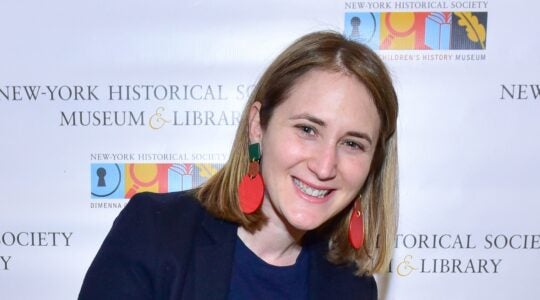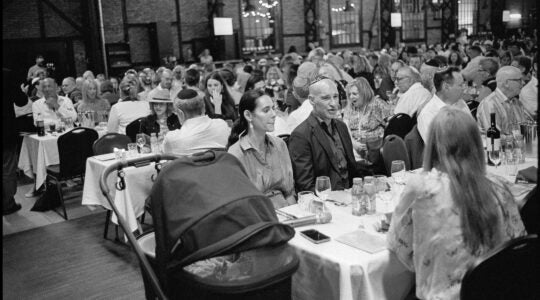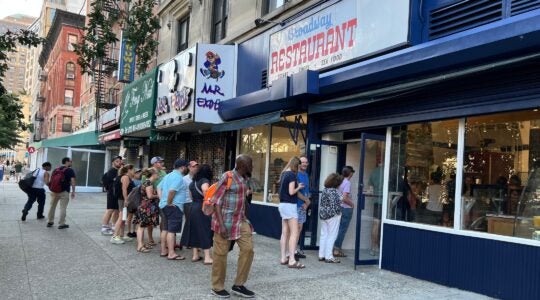Jerusalem — Hours after clashes on the Temple Mount Tuesday between Israeli police and Palestinian rioters, a faint whiff of tear gas still hung in the air in the Old City alleyways near the holy site.
“The moment the dawn prayers ended, the police entered the Temple Mount and the war started,” said one Palestinian teenager just steps away from the ancient plaza considered the holiest site in Judaism and the third holiest in Islam. “Every day we go to protect our holy sanctuary. How would you feel if Jews were entering your holy site.”
Anticipating large numbers of Jewish religious nationalist activists on the Temple Mount during the Sukkot pilgrimage festival, Palestinians had stockpiled stones inside the Al Aqsa Mosque. In a pre-emptive move, Israeli police had stormed the Temple Mount early Monday morning and locked a group of Palestinians inside the mosque while restricting access to men under 50.
The move was praised by Israeli Jews who have pushed for more access to the site of the ancient Jewish Temple. “With the help of God, the Third Temple will be built,” said Knesset member Moti Yogev of the pro-settlement Jewish Home party as he toured new Jewish enclaves in a Palestinian neighborhood near the Temple Mount.
However, the Sukkot clashes on the Temple Mount this week are just one flashpoint in what has been three months of unprecedented unrest across Palestinian districts in Israel’s capital.
Ever since the early-July kidnapping and murder of a Palestinian teen, following the murders of three yeshiva students in the West Bank, clashes with Israeli security forces have become frequent in Jerusalem neighborhoods ranging from Shuafat in the north to Isawiya and Silwan in the east. Though the riots initially made front-page news, persistent violence has mostly been forgotten ever since attention shifted to the 50-day war between Israel and Hamas in Gaza.
As part of the unrest, equipment from Jerusalem’s light rail line has been vandalized almost daily. The railway is operating with only 14 of 23 of its cars, and two stations in Arab neighborhoods lack ticket kiosks because of attacks. Israel’s press reported that the police had requested the light rail operator to hush up reports of vandalism against the train line so as not to encourage copycat behavior.
The turmoil had been festering for so long that earlier this month Jerusalem Mayor Nir Barkat complained in a letter to Prime Minister Benjamin Netanyahu that the response of Israel’s public security ministry was inadequate.
“The police can’t win on the ground,” Birkat wrote, calling for police reinforcements. “There has been a significant rise in public disturbances in Jerusalem and a steady rise in the injury to the sense of security among the residents of Israel’s capital.”
Several days later, the prime minister brought top legal and security officials together to come up with a “fundamental” plan of action to restore the peace in Jerusalem.
An August report on the instability co-authored by Jerusalem lawyer and peace activist Daniel Seidemann and Lara Friedman likened the Jerusalem ongoing unrest to a third Palestinian intifada. The report asserted that the murder of the three Jewish teens in the West Bank, the subsequent revenge murder of Palestinian teen Mohammed Abu Khdeir and the Gaza war had combined to create “the perfect storm of instability” in Israel’s capital.
According to the report, some 600 Palestinians were arrested in east Jerusalem on security grounds in July and August — two and a half times the number of Palestinians arrested on similar charges from 2000 to 2008, a period that covers the second Palestinian intifada. More than 100 police officers have also been injured.
The situation hasn’t improved since then. “We are clearly in a phase of significant escalation in terms of the level and frequency of violence,” said Seidemann. Though large-scale riots have died down, he said daily violence persists.
Part of the reason for the unrest is the vacuum of authority in Arab Jerusalem. Palestinians in the capital have been isolated physically from the West Bank in recent years by Israel’s security barrier, and ever since the second intifada, Israel has banned Palestinian government or political groups from an operating there.
Outside the Old City, just down the slope to the south of the Temple Mount, lies another focal point of tension: the Palestinian neighborhood of Silwan. In the last two weeks, a group of Israeli Jewish settlers moved into some eight properties purchased in the Palestinian neighborhood. The new housing units would significantly expand the Jewish presence in Silwan, which currently numbers 350.
Along with plans to build a major new Jewish neighborhood on the southern edge of the city, the Silwan move spurred international protest and sharp rebuke from the U.S. during Netanyahu’s recent visit.
“The village of Shiloach is returning to its rightful owners,” said Knesset member Yogev as he toured the new apartments in the neighborhood. Silwan sits on what is called “the City of David,” a site reputed to be the seat of King David’s court and part of ancient Jerusalem.
While Yogev argued that the Israeli presence in Silwan would boost security, Palestinian residents complain that the Jewish neighbors have thrown stones at them and attacked children with clubs. They also complain that Israeli Jews are digging for archeological remains of the City of David underneath their homes.
“Three hundred and fifty seven settlers control the life of 55,000 Palestinians,” said Jawad Siyam, the director of the Palestinian Silwan Information Center. “They are not coming here to be our neighbors.”
Despite reports ongoing of attacks against the railway and against Israeli targets in northern Jerusalem, Seidemann points to friction between Jewish activists and Palestinian residents in an around Silwan as the most problematic area of the city. However, with the end of the Jewish holiday season, there’s an opportunity for calm, he suggested.
“The question,” he said, “is when Sukkot ends, will things die down or will the escalation will continue?”
The New York Jewish Week brings you the stories behind the headlines, keeping you connected to Jewish life in New York. Help sustain the reporting you trust by donating today.




